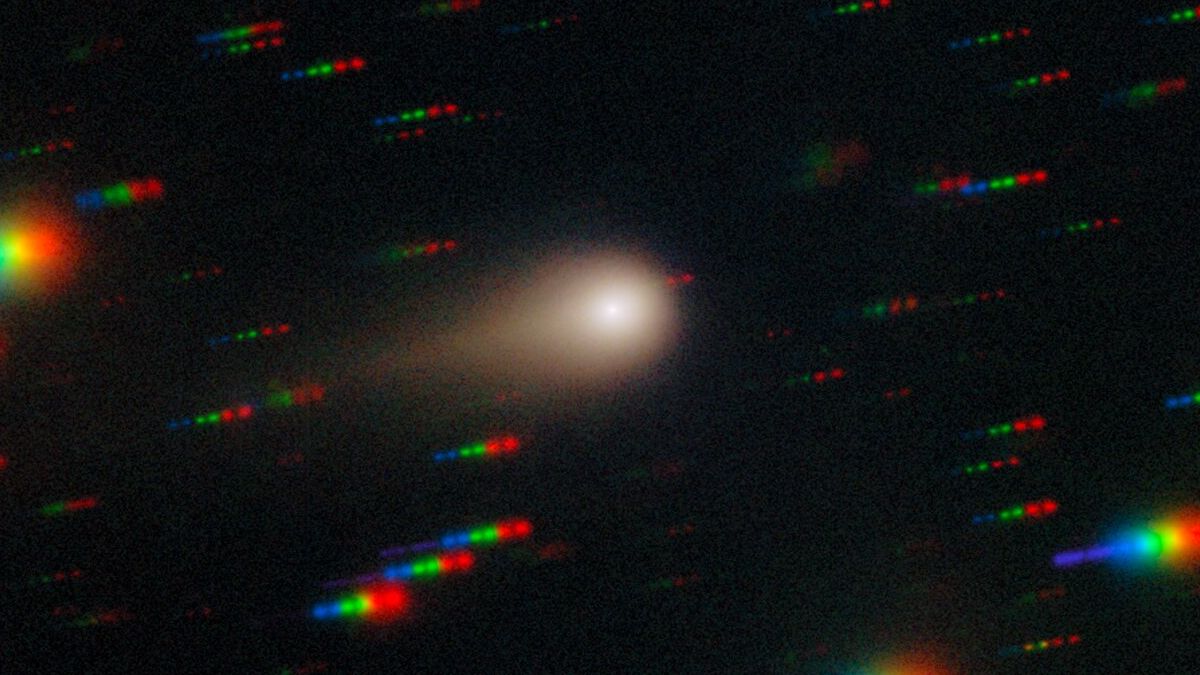Reports surrounding the interstellar comet 3I/ATLAS have stirred significant intrigue, but fears of it being an alien probe are unfounded. Contrary to sensational claims, recent studies confirm that the comet is consistent with a natural, cometary origin. While 3I/ATLAS displays unusual characteristics, these attributes do not imply extraterrestrial involvement.
The comet was first detected on July 1, 2025, and has been a topic of discussion among scientists ever since. Observations from large telescopes indicate that it contains a notable amount of nickel and an unusual proportion of carbon dioxide. Additionally, it lacks the common carbon-chain molecules typically found in other comets. This distinctive composition contributes to its classification as a highly unusual comet within our Solar System.
Scientific Observations and Misconceptions
The comet’s red and dusty appearance suggests it has endured extensive exposure to cosmic rays throughout its journey. Preliminary models estimate that 3I/ATLAS may have formed around 11 billion years ago, making it a subject of fascination for planetary scientists. Despite its natural origins, speculation has arisen, largely fueled by Avi Loeb, a Harvard astrophysicist known for his controversial views on interstellar objects.
Loeb has suggested that some of the comet’s anomalies indicate possible artificial origins, a claim that has faced strong rebuttals from fellow scientists. For instance, Jason Wright, an astronomer at Penn State, pointed out that out of ten anomalies proposed by Loeb, only four genuinely intrigue planetary scientists. These are the high nickel abundance, extreme polarization, unusual water abundance, and rapid brightening. Each of these anomalies aligns with characteristics expected from a new type of comet.
The narrative that 3I/ATLAS might be disintegrating also stems from Loeb’s assertions regarding its mass loss rate. He argued that the amount of material in the comet’s tail, observed after it passed behind the Sun in early November, suggested a structural integrity issue. In reality, comets often fragment as they approach the Sun due to sublimating ice, which can lead to explosive disintegration.
Cometary scientist Qicheng Zhang from Lowell Observatory remarked that images of 3I/ATLAS depict a healthy-looking comet, lacking any clear signs of break-up. This observation refutes the claims made by those suggesting the comet’s imminent disintegration.
Radio Signals and Continued Research
Recent excitement has also emerged from reports of radio signals detected from 3I/ATLAS. These signals were recorded by the MeerKAT radio telescope array in South Africa on October 24, 2025. The signals originate from the photodissociation of water molecules, a common phenomenon observed in comets. As the comet approaches the Sun, ultraviolet light splits water vapor into smaller components, resulting in radio absorption signals—an expected occurrence as 3I/ATLAS nears our solar system.
While the scientific community continues to analyze the data, all available evidence supports the notion that 3I/ATLAS is a comet, albeit one with distinctive properties. Canadian astronomer David Levy once noted that “Comets are like cats: they have tails, and they do precisely what they want.” This sentiment underscores the inherent unpredictability of comets as they travel through space.
Despite ongoing speculation, the overwhelming consensus among scientists is that 3I/ATLAS is not an alien probe. The data collected so far firmly classify it as a comet. The scientific community remains vigilant, with plans for close observations as the comet zips past Jupiter in March 2026. This presents an exciting opportunity for further research into this remarkable interstellar visitor that has traveled through space for billions of years.


































































